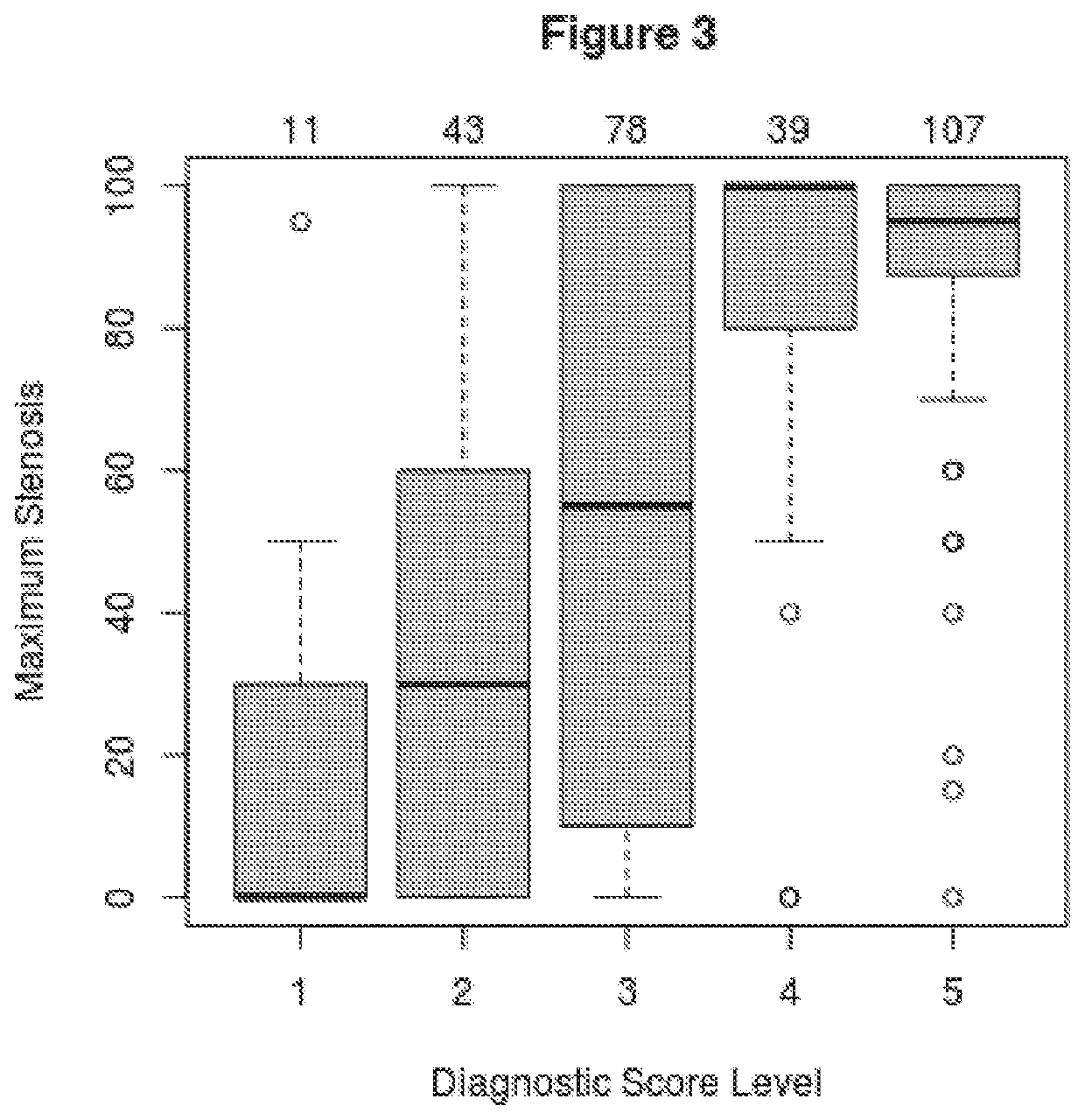Diagnostic and prognostic methods for cardiovascular diseases and events
- Summary
- Abstract
- Description
- Claims
- Application Information
AI Technical Summary
Benefits of technology
Problems solved by technology
Method used
Image
Examples
example 1
l and Biomarker Scoring System to Diagnose Obstructive Coronary Artery Disease (CAD), Panel FM139 / 685
[0249]A convenience sample of 1251 patients undergoing coronary and / or peripheral angiography with or without intervention between 2008 and 2011 were prospectively enrolled. Patients who received only a peripheral angiography or no catherization procedure at all were excluded from this analysis (N=244). Additionally, a chronological subset of the final 153 patients who had received either a coronary or peripheral cath were withheld from this analysis, for their potential use in further validation of these models. Patients were referred for these procedures for numerous reasons; this includes angiography following acute processes such as myocardial infarction (MI), unstable angina pectoris, and heart failure (HF), but also for non-acute processes, such as for diagnostic evaluation of stable chest pain, failed stress testing, or pre-operatively prior to heart valve surgery.
[0250]After ...
example 2
l and Biomarker Scoring System to Diagnose Obstructive Coronary Artery Disease (CAD), Panel FM46 / 572
[0273]This example demonstrates yet another non-invasive method employing a clinical and biomarker scoring system that offers, among other things, high accuracy in diagnosing the presence of anatomically significant CAD, and in providing a prognosis of cardiovascular events. This example utilized the same described methods (study design and participants, data acquisition, follow up, biomarker testing, statistics and results (Tables 1A, 3A, 5, and 6; FIGS. 18-20) as Example 1. The primary differences between Example 1 and Example 2 are the clinical variables and proteins that were utilized.
[0274]Following the described methods, from the training cohort (N=649), independent predictors of CAD≥70% in any one vessel included three biomarkers (adiponectin, decorin, and midkine) and three clinical variables (history of myocardial infarct, history of percutaneous coronary intervention and sex...
example 3
l and Biomarker Scoring System to Diagnose Obstructive Coronary Artery Disease (CAD), Panel FM02 / 410
[0282]This example demonstrates yet another non-invasive method employing a clinical and biomarker scoring system that offers, among other things, high accuracy in diagnosing the presence of anatomically significant CAD, and in providing a prognosis of cardiovascular events.
[0283]This example utilized the same described methods as Example 1 and 2 (study design, data acquisition, follow up, biomarker testing, statistics and results), with the exception of the subjects. This example included those subjects that only had a coronary catheterization, N=809, (vs. subjects with a coronary catheterization and optionally a peripheral catheterization (Tables 1B, 3B, 13, 14, 15 and 16 and FIG. 28).
[0284]The patients selected for analysis consisted of the chronologically initial 809 patients who received only a coronary angiogram. Patients who may have also received a peripheral angiogram concomi...
PUM
 Login to View More
Login to View More Abstract
Description
Claims
Application Information
 Login to View More
Login to View More - R&D
- Intellectual Property
- Life Sciences
- Materials
- Tech Scout
- Unparalleled Data Quality
- Higher Quality Content
- 60% Fewer Hallucinations
Browse by: Latest US Patents, China's latest patents, Technical Efficacy Thesaurus, Application Domain, Technology Topic, Popular Technical Reports.
© 2025 PatSnap. All rights reserved.Legal|Privacy policy|Modern Slavery Act Transparency Statement|Sitemap|About US| Contact US: help@patsnap.com



